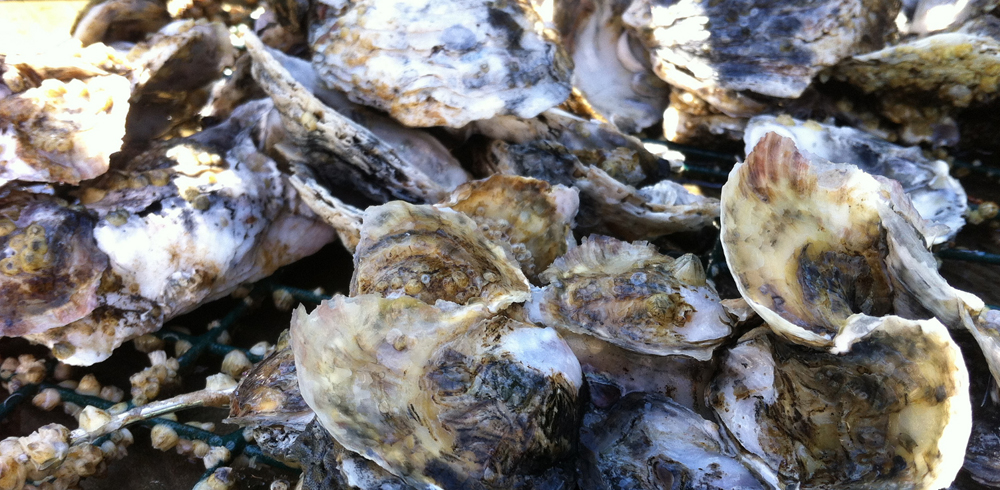During the month of November, Virginians can now officially celebrate our cherished mollusks we all know and love, the Oyster! As the holiday season begins, we want to share the unique story of the Eastern Oyster along with some delectable dishes to serve at Thanksgiving and beyond.
Crassostrea virginica has held a very important role in Coastal Virginia’s history and waterman heritage. Specifically in the James River, the lower Tidewater has traditionally been a bustling, oyster-dependent community. In an excerpt from “The River Binds Us: A Story Told by the People of Crittenden, Eclipse, and Hobson,” Roland Anderton recalls the busy harvesting season circa the 1930’s:
“Oystermen went miles up the James River in the fall of the year to buy small seed oysters and planted them on their own oyster grounds in the vicinity of Crittenden where they were left to grow for eighteen months or longer, when they were harvested and sold to the Norfolk markets. In the off season they repaired boats and equipment and harvested clams. There was shad and pound fishing in the spring months. During the fall months oyster-men came from many Tidewater and Eastern Shore areas to harvest oysters. Many had cabins on their boats sufficient for cooking, eating, and sleeping. Others rented small boats (shanties) in which they lived during their stay.”
As the large spike in development and population growth occurred in the 1950’s, oysters showed a decline in the James. A parasitic disease known as Dermo cause large swaths of oyster die-off in the ecosystem. In addition, the economic dependence and lucrative fishing industry promoted unsustainable harvesting practices, inevitably causing massive losses in population.
Fortunately, today’s oyster fishery is maintained through regulating harvest, establishing sanctuaries, researching disease, and restoring habitat. This is excellent news for our ecosystem and our bellies! As reported in our most recent State of the James Report, in 2020, just two years from the previous recorded period, the James River public oysters grounds grew by 25%!
We all know oysters are good for water quality; one individual can filter up to 50 gallons of James River or Chesapeake Bay water a day. With a fully healthy oyster population, they would filter the entire volume of the James River estuary in just six days! But — oysters are also good for satiating our appetites! Whether you are eating wild-caught or aquaculture-raised, these salty bivalves are a treat not to be missed this month!
Here are some James River Association staff picks for favorite oyster dishes:
- Bill Street, CEO: Oysters Rockefeller
- Erin Hillert, Sr. Marketing & Communications Manager: “As fresh as I can get!”
- Amber Ellis, Restoration Director: Roasted Oysters
- Justin Doyle, Director of Community Conservation: Raw Oysters with Mignonette
- Angie Williams, Sr. Digital Marketing Manager: Oyster Stuffing
If the thought of oyster shucking makes you clam-up, you can get your oyster fix via the Virginia Oyster Trail. Check out trail sites, restaurants, and plenty of places to try oysters within the James River watershed.
Header image by Steve Freeman

